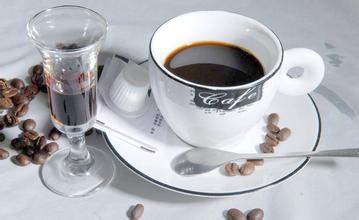Introduction of Bolivian Coffee Flavor Manor in perennial low temperature Environment
Bolivia has made a lot of efforts to improve the quality of coffee, stimulate the enthusiasm of coffee farmers and make coffee farmers have a deeper understanding of fine coffee. After the introduction of the COE competition, in the first COE competition held in 2004, there were 13 boutique bean cups with a total score of more than 84 points, and the champion bean score was as high as 90.44 points. In addition, in order to solve the problem of untimely post-processing, a washing treatment plant has also been built in Yanggas area. Let the freshly picked coffee be post-processed as soon as possible to prevent the decline in quality caused by transportation. Coffee farmers are also constantly refining their planting techniques. In short, Bolivia has finally completed a magnificent turn in quality through its own efforts in all aspects.
Bolivia not only has a unique growing environment, but also has an excellent variety of coffee-Typica. In the past two hundred years, the main variety of coffee in Yanggas area is the ancient Tibica. Tibica coffee has a balanced and soft flavor, with lively aroma and rich sour taste. Unfortunately, the low production of Tibika and poor disease resistance have led to low coffee production in Bolivia. There are even fewer opportunities to taste Bolivian coffee. So in order to increase coffee production, Bolivia, like other Central American countries, began to experiment with growing Kaddura and Catuai. Kaddura variety has high yield, high quality, rich sour taste and resistance to leaf rust. Kaduai variety has high yield, strong environmental adaptability and tolerance to diseases and insect pests. Planting these two varieties is expected to increase the yield as much as possible while ensuring the flavor quality.
The overall taste of Bolivian coffee is rich and balanced, the aroma is rich and unique, similar to the mixture of flower and fruit aroma, impressive. The perennial low temperature environment makes the coffee fruit grow slowly, compact enough, the aroma is also charming, the floral aroma is obviously medium and low acidity, but the feeling is not monotonous, on the contrary, it appears soft and fresh, with the sour taste of citrus fruit.
Because Bolivia's production is low, we don't have many chances to drink it. It is precisely because the smaller the output, the more precious it is. Because of my personal preference for Central American coffee, I prefer Bolivia, a small and beautiful coffee producer.

Important Notice :
前街咖啡 FrontStreet Coffee has moved to new addredd:
FrontStreet Coffee Address: 315,Donghua East Road,GuangZhou
Tel:020 38364473
- Prev

Introduction of Ugandan boutique coffee beans with delicate taste and unique flavor
The coffee growing industry in Uganda is one of the pillar industries of its exports. Uganda is the birthplace of Robsta in Africa, just as Ethiopia is the origin of Arabica coffee, while Robster coffee was first discovered in Uganda. So far, Uganda has a history of growing coffee for more than 100 years. At the same time, Uganda is one of the few major countries in Africa dedicated to the production of organic coffee. In Wu
- Next

Introduction of Panamanian Rosa Coffee Flavor Manor
Rosa coffee raw beans have a very beautiful blue-green, jade-like warm texture, smell fresh grass, peach, berry flavor and oolong tea unique milk sweetness that most coffee beans do not have. it seems that aroma and taste of this kind of things need to be associated, but the faint smell of tea is obvious to us [1]. In order to highlight the characteristics of this bean
Related
- Detailed explanation of Jadeite planting Land in Panamanian Jadeite Manor introduction to the grading system of Jadeite competitive bidding, Red bid, Green bid and Rose Summer
- Story of Coffee planting in Brenka region of Costa Rica Stonehenge Manor anaerobic heavy honey treatment of flavor mouth
- What's on the barrel of Blue Mountain Coffee beans?
- Can American coffee also pull flowers? How to use hot American style to pull out a good-looking pattern?
- Can you make a cold extract with coffee beans? What is the right proportion for cold-extracted coffee formula?
- Indonesian PWN Gold Mandrine Coffee Origin Features Flavor How to Chong? Mandolin coffee is American.
- A brief introduction to the flavor characteristics of Brazilian yellow bourbon coffee beans
- What is the effect of different water quality on the flavor of cold-extracted coffee? What kind of water is best for brewing coffee?
- Why do you think of Rose Summer whenever you mention Panamanian coffee?
- Introduction to the characteristics of authentic blue mountain coffee bean producing areas? What is the CIB Coffee Authority in Jamaica?

